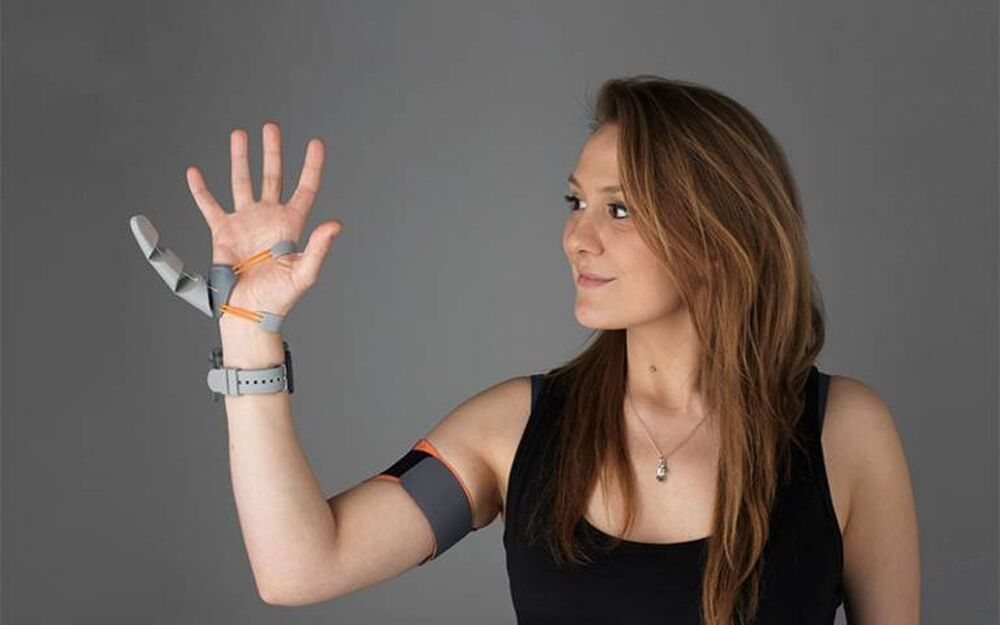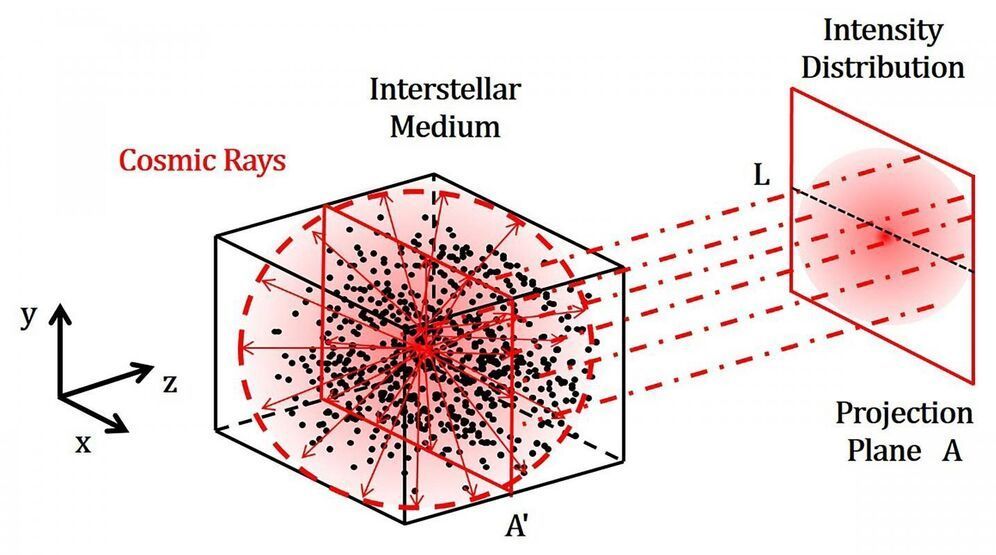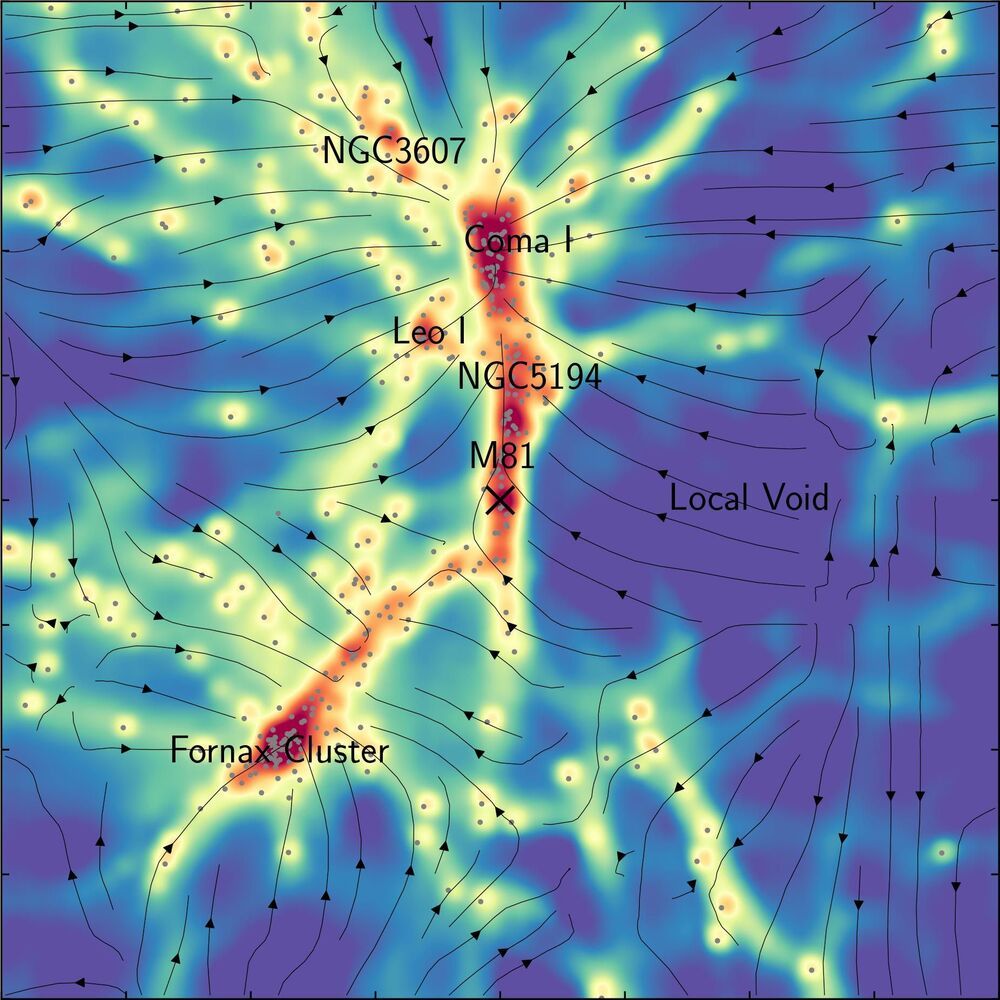Our oceans are filled with tiny pieces of plastic. These tiny devices can break them down.



UCL researchers have created a strange robotic “third thumb” that attaches to the hand and adds a large extra digit on the opposite side of the hand from the thumb. Researchers found that using the robotic thumb can impact how the hand is represented in the brain. For the research, scientists trained people to use an extra robotic thumb and found they could effectively carry out dexterous tasks such as building a tower of blocks using a single hand with two thumbs.
Researchers said that participants trained to use the extra thumb increasingly felt like it was part of their body. Initially, the Third Thumb was part of a project seeking to reframe the way people view prosthetics from replacing a lost function to becoming an extension of the human body. UCL Professor Tamar Makin says body augmentation is a growing field aimed at extending the physical abilities of humans.

Anyone who spends a lot of time in the kitchen knows that there’s at least one gadget out there for every single step in the cooking process. But there has never been an appliance that could handle them all. Until now, that is.
Later this year, London-based robotics company Moley will begin selling the first robot chef, according to the Financial Times. The company claims the ceiling-mounted device, called the Moley Robotics Kitchen, will be able to cook over 5000 recipes and even clean up after itself when it’s done.

Cosmic rays are high-energy atomic particles continually bombarding Earth’s surface at nearly the speed of light. Our planet’s magnetic field shields the surface from most of the radiation generated by these particles. Still, cosmic rays can cause electronic malfunctions and are the leading concern in planning for space missions.
Researchers know cosmic rays originate from the multitude of stars in the Milky Way, including our sun, and other galaxies. The difficulty is tracing the particles to specific sources, because the turbulence of interstellar gas, plasma, and dust causes them to scatter and rescatter in different directions.
In AIP Advances, University of Notre Dame researchers developed a simulation model to better understand these and other cosmic ray transport characteristics, with the goal of developing algorithms to enhance existing detection techniques.

Four private astronauts have been strapped into a centrifuge, climbing mountains and learning how to fly a spacecraft ahead of their flight to space — the first-ever crewed space mission without any “professional astronauts” on board.
The crew is preparing to launch this upcoming September as part of the Inspiration4 mission aboard a SpaceX Crew Dragon spacecraft. The mission, privately chartered by billionaire Jared Isaacman to support St. Jude Children’s Research Hospital, recruited three crew members in addition to Isaacman for the trip which will fly around the Earth for several days. The crew includes Isaacman, St. Jude physician’s assistant and childhood bone cancer survivor Hayley Arcenaux, data engineer Chris Sembroski and geoscientist, science communicator and artist Sian Proctor.

Researchers identify a mechanism that could lead to new treatments for brain injuries caused by oxygen deprivation.
In a surprising discovery, researchers at Massachusetts General Hospital (MGH) identified a mechanism that protects the brain from the effects of hypoxia, a potentially lethal deprivation of oxygen. This serendipitous finding, which they report in Nature Communications, could aid in the development of therapies for strokes, as well as brain injury that can result from cardiac arrest, among other conditions.
However, this study began with a very different objective, explains senior author Fumito Ichinose, MD, PhD, an attending physician in the Department of Anesthesia, Critical Care and Pain Medicine at MGH, and principal investigator in the Anesthesia Center for Critical Care Research. One area of focus for Ichinose and his team is developing techniques for inducing suspended animation, that is, putting a human’s vital functions on temporary hold, with the ability to “reawaken” them later. This state of being would be similar to what bears and other animals experience during hibernation. Ichinose believes that the ability to safely induce suspended animation could have valuable medical applications, such as pausing the life processes of a patient with an incurable disease until an effective therapy is found. It could also allow humans to travel long distances in space (which has frequently been depicted in science fiction).

2 sticks of RAM giving you 1TB of memory will be the norm soon.
While consumers today typically use computers with 8GB or 16GB of DDR4 RAM inside, Samsung is pushing ahead with the next generation of memory modules. Its latest stick of RAM is a 512GB DDR5 module running at 7200Mbps.
The new module will be used in servers performing “the most extreme compute-hungry, high-bandwidth workloads.” That means supercomputers, artificial intelligence, and machine learning. It was made possible thanks to advanced HKMG technology, which Samsung adopted back in 2018 for its GDDR6 memory. Basically, HKMG replaces the insulator layer in DRAM structures. The high dielectric material contained in the layer reduces current leakage and therefore allows higher performance. At the same time, Samsung managed to reduce power usage in the new module by 13%.
“Samsung is the only semiconductor company with logic and memory capabilities and the expertise to incorporate HKMG cutting-edge logic technology into memory product development,” said Young-Soo Sohn, Vice President of the DRAM Memory Planning/Enabling Group at Samsung Electronics. “By bringing this type of process innovation to DRAM manufacturing, we are able to offer our customers high-performance, yet energy-efficient memory solutions to power the computers needed for medical research, financial markets, autonomous driving, smart cities and beyond.”


A new map of dark matter in the local universe reveals several previously undiscovered filamentary structures connecting galaxies. The map, developed using machine learning by an international team including a Penn State astrophysicist, could enable studies about the nature of dark matter as well as about the history and future of our local universe.
Dark matter is an elusive substance that makes up 80% of the universe. It also provides the skeleton for what cosmologists call the cosmic web, the large-scale structure of the universe that, due to its gravitational influence, dictates the motion of galaxies and other cosmic material. However, the distribution of local dark matter is currently unknown because it cannot be measured directly. Researchers must instead infer its distribution based on its gravitational influence on other objects in the universe, like galaxies.
“Ironically, it’s easier to study the distribution of dark matter much further away because it reflects the very distant past, which is much less complex,” said Donghui Jeong, associate professor of astronomy and astrophysics at Penn State and a corresponding author of the study. “Over time, as the large-scale structure of the universe has grown, the complexity of the universe has increased, so it is inherently harder to make measurements about dark matter locally.”

Interest in such plush panic rooms is skyrocketing, he said. His firm started offering high-end shelters and the like a decade ago — of the 232 it’s built so far, 200 were commissioned in the last five years.
One $14 million panic-room project built in the San Jose Valley includes a bowling alley and indoor pool.